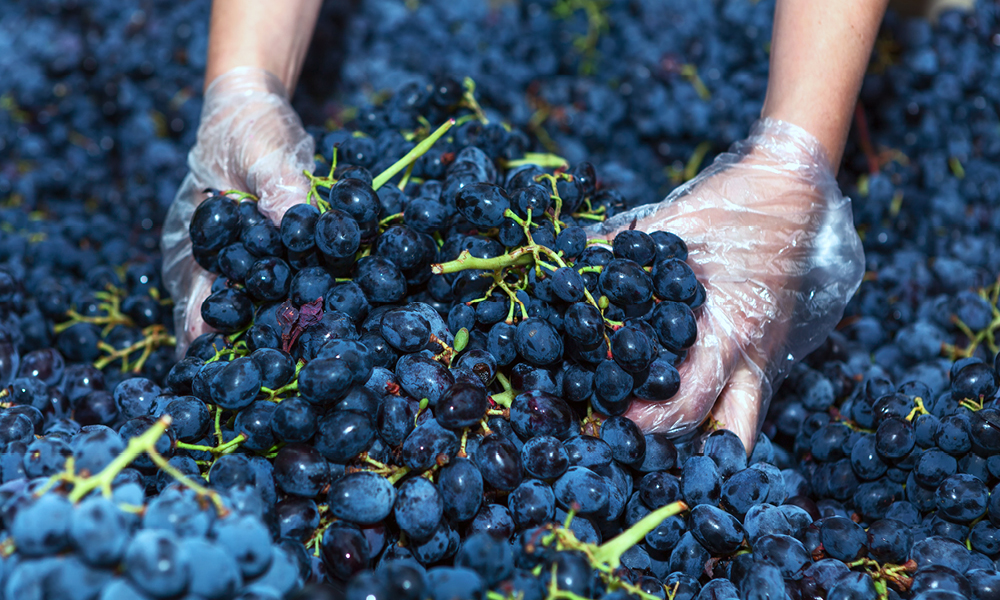There is a European country blessed with fine vineyards that are filled with mature international vine varieties.
It has thousands of years of winemaking experience, great soils, the largest wine collection in the world,1 an ideal climate, and is on the same latitude as Burgundy. Yet it is the poorest country in Europe, at the centre of an East/West tug of war around wine and now on the doorstep of an ugly and terrible war.
Moldova is in the middle
Until very recently, few Australians would feel confident pointing to the Republic of Moldova on a map. But the war in the Ukraine has brought international attention to the unfinished business of much of Eastern Europe and Moldova’s part of the world particularly.
Moldova’s greatest asset and liability all rolled into one is its critical strategic location – wedged between Ukraine and Romania and the flows of the mighty Dniester and Danube rivers. Its fertile riparian lands have blessed and cursed Moldovan winemaking as the tides of geopolitics continually wash over it.
For context, the 2.6 million people of Moldova are Romanian, by a slim majority. But like most former Soviet republics, within Moldova’s borders is a disputed pro-Russian breakaway unrecognised state – called the Pridnestrovian Moldavian Republic (PMR) or more simply Transnistria – sitting on the land between the left bank of the Dniester River and the Ukrainian border.
The tug of war between East and West has always played out in Moldova for the control of its fertile lands and has had a significant effect on export products like wine.
Presently wine is the third largest export for Moldova ($134m in 2020) after insulated wire and sunflower seeds. For its relatively small size, Moldova is the 20th largest exporter of wine2 in the world and the contribution of this commodity to the economy of Europe’s poorest nation is immense. Belarus, Romania, Czechia, Russia and Poland are its major wine export partners.
To put that into context, Australia is the world’s 4th largest exporter of wine with sales in 2020 of $2.09 billion.3
The land-locked nation is highly reliant on its wine industry, with a spokesperson for the Cricova winery summing it up: “In Moldova we don’t have anything in terms of tourism like the sea and mountains, we only have grapes and good soil for growing vines.”4
Moldova has taken 400,000 refugees from Ukraine during the first months of the 2022 Russian invasion of Ukraine.5
A long history of winemaking
Amphorae winemaking in the Moldova region goes back thousands of years. Greek settlements at the mouths of the major rivers were wine centres in the 5th Century BC. The Romans traded wine in the 1st Century AD, and the medieval kingdom known as Moldavia exported high-quality wine to the nearby kingdoms of Poland, Ukraine and Russia.
The Ottoman Turks closed down the wineries in the 15th Century and winemaking did not return until the 19th Century. The same period saw much political uncertainty as Moldavia was split and annexed to the Tsar of Russia before breaking away to be united with Wallachia to form Independent Romania, and then ceded back to Russia again.
Following the Russian Revolution of 1917, Moldavia once again broke away and reunited with Romania. Its independence was disputed by Russia, but it wasn’t until 1940, under the Molotov-Ribbentrop Pact, that Moldavia was abandoned by Romania to the Russians. It briefly regained independence during World War II, but Russia reasserted control in 1944 and it remained within the Soviet Union until its collapse, regaining independence and a name change to Moldova in 1991.
Despite the political turmoil, wine was reinvigorated by the Russian Tsars, who encouraged the planting of modern European varieties and investment in technology and imported skills from France. The Tsar then stocked his cellar with the fine wines of Moldova.
During the Soviet era, quality was forsaken for quantity, with mass planting programs and mass production, as wine was seen as a healthier option for the workers than vodka. Gorbachev’s 1985 anti-alcoholism campaign stopped that, and land privatisation following independence conspired to decimate the over-planting of vineyards and reduce over-production.
Wine and modern geo-politics
Following independence, the majority of Moldovan wine production was exported to Russia, but politics intervened in 2006 when Russia issued a health ban on Moldovan and Georgian wine imports citing contaminants – strangely, this coincided with a dispute between Russia and Moldova on the breakaway Transnistria.
The silver lining was a renaissance of quality-focused production and international joint ventures lifting the industry with a western focus. The Russian ban was lifted in 2007, but with limits on volume.
A subsequent wine ban was introduced in 2010 by Russia, lifted and imposed again in 2013, citing the ‘unsatisfactory quality’ of Moldovan wine. The 2013 ban coincided with Moldova flirting with signing a treaty with the European Union and looking west for its future. In August 2021, following further negotiations, Russia agreed to lift the Moldovan wine ban again.
Moldovan winemaker Alexandru Luchianov6 summed up the confusion when he said, “Moldova is split between Europe and Russia. Half of us want to go one way, the other half a different direction. But both will gain, at least when it comes to wine.”7
The terrible 2022 war in Ukraine has also severely disrupted Moldovan winemakers and the economic lifeblood of this small, landlocked nation. Many wine producers had relied on the Ukrainian Black Sea port of Odessa as their preferred and most convenient export hub, and presently the major exports markets of Ukraine, Russia and Belarus are all off the table.
As a result of the war, in March 2022, the governments of former Soviet republic wine-making states Georgia and Moldova both made formal fast-track applications to join the EU. Many Moldovan winemakers are hopeful that joining the EU will open up new stable markets and opportunities for the future. Hopefully this can occur without permanently shutting the gate to Russian markets for Moldovan winemakers.
Vladimir Putin’s private wine collection
Perhaps nothing sums up the tug of war for Moldova and its wine like Vladmir Putin’s private collection.
In February 2020, Forbes Magazine8 reported on the luxurious underground cellars of state-owned Cricova cellars in the limestone hills near the Moldovan capital of Chisinau. The 130-acre estate sits upon miles of former limestone quarry tunnels which were turned to luxury wine cellaring and tasting suites during the Soviet era. The tunnels house 1.3 million bottles of wine and came complete with a gold-plated buggy for President Putin when he visited his personal wine collection housed in the tunnels since 2002.
Cricova also houses the remnants of Nazi commander-in-chief Hermann Göring’s wine collection seized by Soviet troops during World War II.
This month however, Canadian news outlet GlobalNews reported that, after 20 years, Vladimir Putin’s collection had left Cricova:
“Cricova was also, until recently, home to a private wine collection for Russian President Vladimir Putin. Our tour guide says that this has been moved, but when we ask why and to where, she says she doesn’t know.”9
Moldova in the middle, again
Moldova, the tiny winemaking republic wedged precariously between East and West is too close for comfort to its larger fighting neighbours and former wine trading partners. While the horror of war and the giants of world geo-politics posture, the winemakers of Moldova find themselves, once again, in the middle of it all.
This is an expanded and updated version of an article first published in QLS Proctor in February 2019.
Matthew Dunn is Queensland Law Society Policy, Public Affairs and Governance General Manager.
Footnotes
1 milestii-mici.md/en.
2 oec.world/en/profile/bilateral-product/wine/reporter/mda#:~:text=Exports%20In%202019%2C%20Moldova%20exported,most%20exported%20product%20in%20Moldova.
3 oec.world/en/profile/bilateral-product/wine/reporter/aus.
4 globalnews.ca/news/8686213/moldova-wine-industry-ukraine.
5 data2.unhcr.org/en/situations/ukraine.
6 etcetera.md.
7 politico.eu/article/winemakers-in-moldova-eyethirsty-russian-market.
8 forbes.com/sites/jimdobson/2020/02/26/inside-vladimir-putins-outrageous-underground-wine-cellar-in-moldova/?sh=3ecb093c5e1d.
9 globalnews.ca/news/8686213/moldova-wine-industry-ukraine.













Share this article